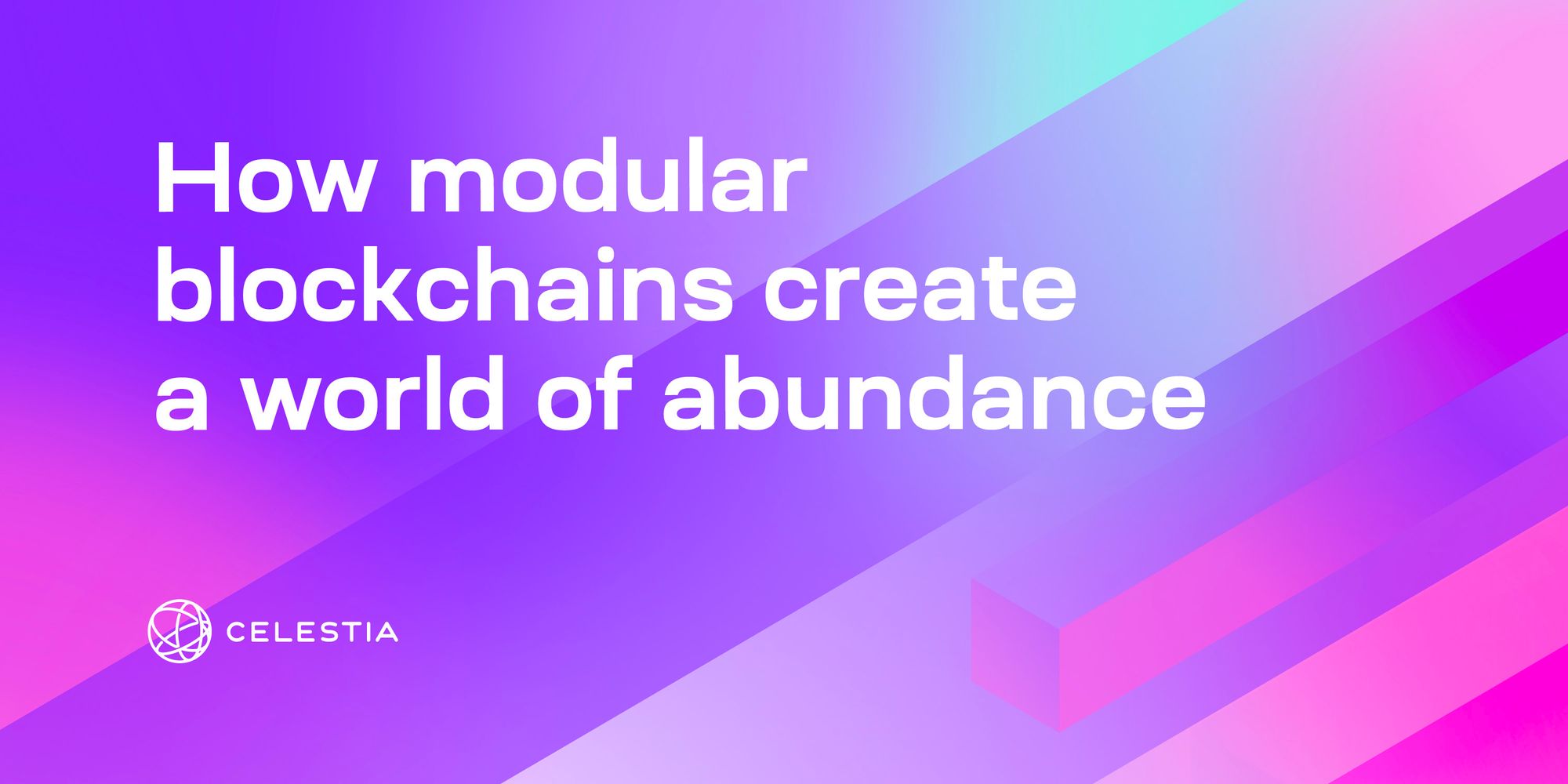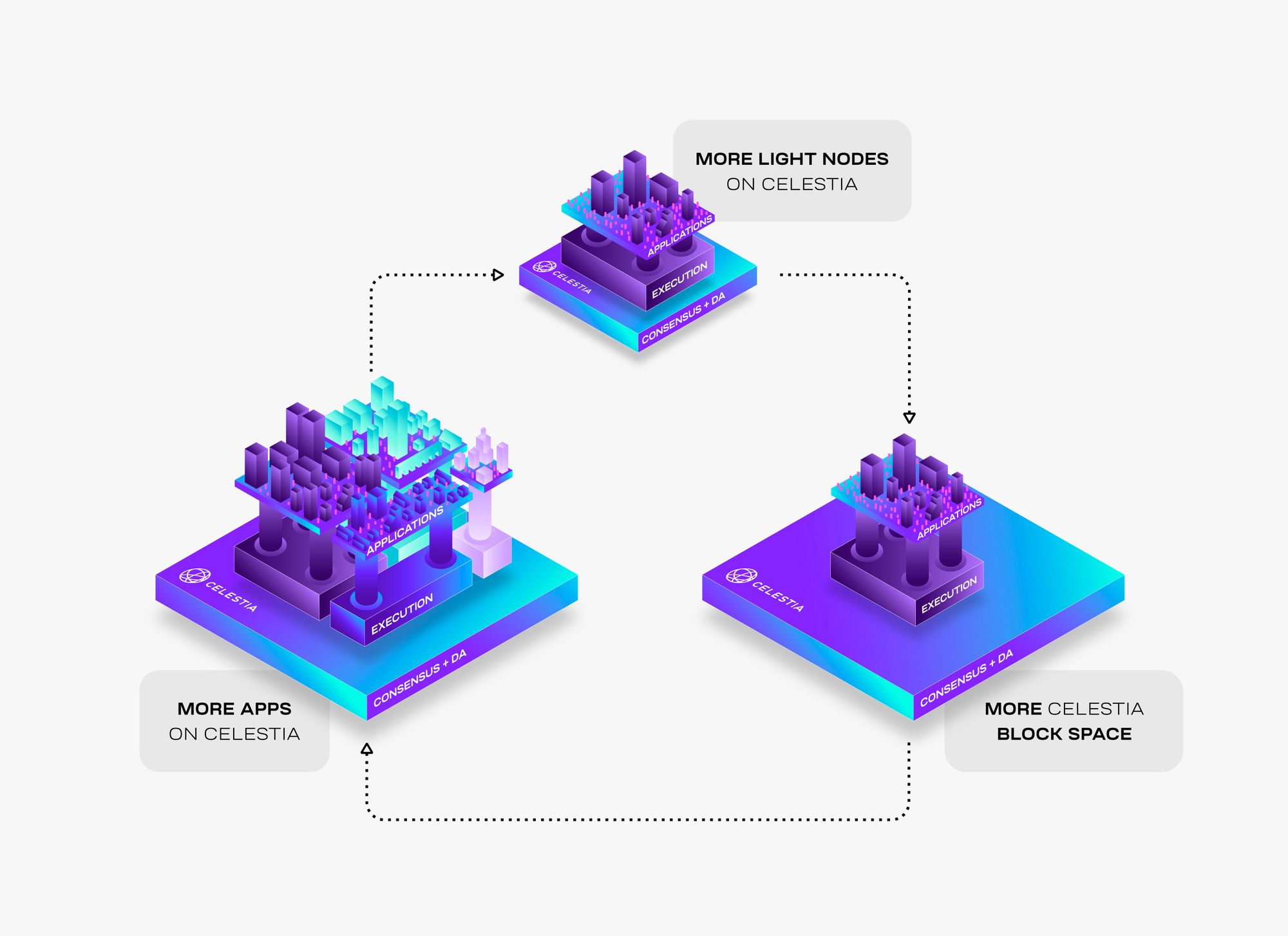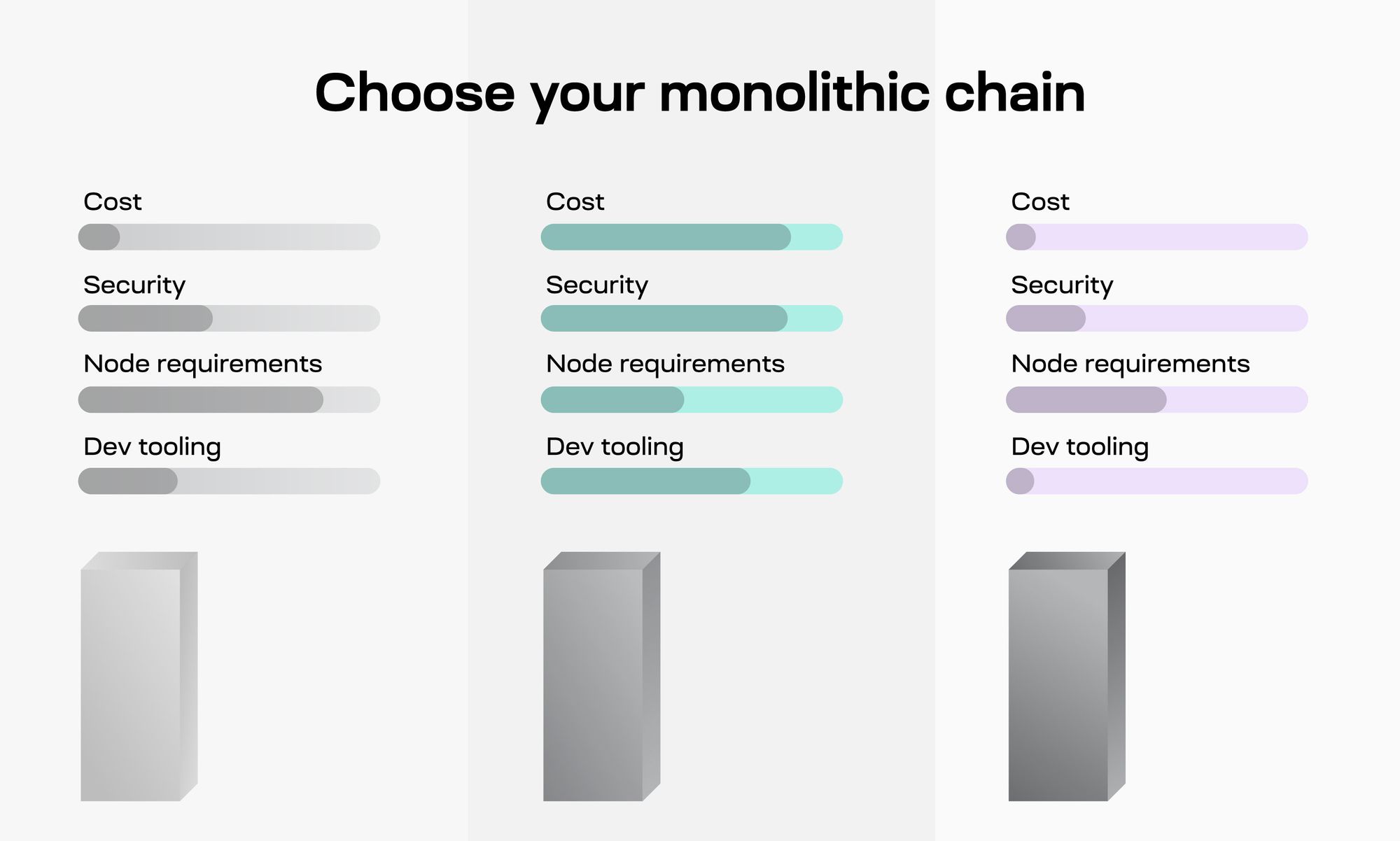How modular blockchains create a world of abundance

Scarcity negatively impacts monolithic blockchains users two ways. First, scarce blockspace makes blockchains expensive for users. Second, scarcity of choice limits the options developers, restricting innovation.
Modular blockchains decouple consensus from execution, enabling blockchains to be purpose-built for a specialty. This lets modular blockchains deliver abundant blockspace for cheap access and abundant choice for developers, enabling innovation.
Let’s look at how modular blockchains enable abundance and what that means for the modular ecosystem.
TLDR
- Modular chains like Celestia can provide abundant blockspace as their ecosystem grows because more nodes allows them to increase their blockspace.
- Monolithic chains restrict options for developers by requiring them to conform to their set of features and tradeoffs.
- Modular chains provide abundant options for developers because they can deploy a chain with their desired features and tradeoff, tailored for their application.
Abundance of Scale
High fees have plagued monolithic chains, causing problems for users interacting with applications and the developers building those applications. Why does this happen?
It’s simple. Due to the limitations of a monolithic architecture, blockspace is scarce. Everything is fine when there is a low amount of activity. When an application starts to experience adoption, it draws in more users. Those users increase the amount of activity on the chain filling up the available blockspace. Since blockspace is scarce, fees rise because of the high amount of activity.
Here lies the problem, more users can make it more expensive to transact.
Modular blockchains flip this paradigm on its head. As more users join the network, modular blockchains, like Celestia, can increase their blockspace. Now, fees can remain affordable as more applications get built that bring in additional users. So, how does this work exactly?
Celestia introduces a new technology known as data availability sampling. This sampling process allows light nodes to verify a block with similar security to a full node and only a fraction of the hardware. Here’s where the magic happens. More sampling light nodes allows Celestia to increase its block size.
This means Celestia’s blockspace can grow to meet increased demand, replacing scarcity with abundance.

So, what’s the result of all this abundant blockspace? Users will have affordable fees to interact with applications. Developers will be able to build applications that are accessible to many users, even when their user base grows.
Abundance of choice
The execution environment
Monolithic chains can be convenient for developers to deploy their application. However, monolithic chains provide a scarce number of options for developers.
By deploying on a monolithic chain, developers have to conform to the existing execution environment. That dictates which programming languages developers can write smart contracts in, how applications can interact with wallets, and many other things.
Working within the existing set of features limits developers' choices to build their applications. They may not have access to the programming language they want to use, and the supported languages may lack in functionality. How contracts interact with wallets may create a clunky user experience that makes applications less usable. These are examples of how developers must conform to a monolithic chain's limited set of pre-existing rules.
Modular blockchains provide the building blocks of abundant choices for developers. Modular chains specialize in a certain function and offload the rest to existing infrastructure. For example, rollups can focus on the execution part and plug into Celestia to offload consensus and data availability.
It is specialization that allows developers to focus solely on the execution environment. They could pick from an existing execution environment offered by a rollup framework or SDK. Alternatively, they could experiment and iterate on their own execution environment to provide their application or community with their desired set of features.
The feature additions could include anything from making the execution environment support more desirable programming languages, increased user-friendliness with native account abstraction, or enhancements like parallel processing to increase performance.

The abundance of choice enables devs to experiment and increase the rate of improvements and innovation, enhancing the quality of their application. Alternatively, they can use their execution environment to add custom features to an already popular VM, like the EVM.
While monolithic chains limit options for developers, modular chains that give developers the freedom to focus on their execution environment brings an abundance of choice and opportunities to suit the goals of their application.
Leverage modular building blocks
Monolithic chains have restrictions around rules other than the execution environment. Your application must conform to the set of features and tradeoffs that the monolithic chain makes. There might not exist any monolithic chains that fit the desired set of features and tradeoffs for your application. There is no easy path to customize features and their tradeoffs when it’s not your chain.

With modular blockchains, developers can leverage existing blockchains to meet their desired set of features and tradeoffs. First, they can determine where in the modular stack their tradeoffs fit best. If sovereignty and the ability to upgrade via forks is needed, a sovereign rollup fits that. Maybe having a native trust-minimized bridge with a settlement layer is a higher priority; a smart contract rollup may be better suited. Alternatively, access to Ethereum is as important as cheap fees - a Celestium sounds more appropriate.

There are many possibilities to deploy within the modular stack, each with unique features and tradeoffs. The optionality enabled by modular blockchains allows developers to build a blockchain that fits the needs and goals of their application, while monolithic chains limit these options.
Summary
Scarcity in monolithic blockchains introduces several problems that negatively impact user experience. Modular chains minimize these problems by introducing abundance where monolithic chains are scarce.
Blockspace scarcity creates a situation where more activity can cause transaction fees to increase, pricing out users and app developers. Modular chains like Celestia provide scalable blockspace that can grow with the number of nodes, keeping fees low for users and enabling use cases that depend on low-cost transactions.
Scarcity of choice limits developers' options, restricting innovation and customizability for the desired use case. Modular chains introduce the notion of specialization, enabling developers to customize and deploy within the modular stack where it suits their preferred set of features the most.
Modular blockchains are abundant because access and options for blockchains should not be limited.
